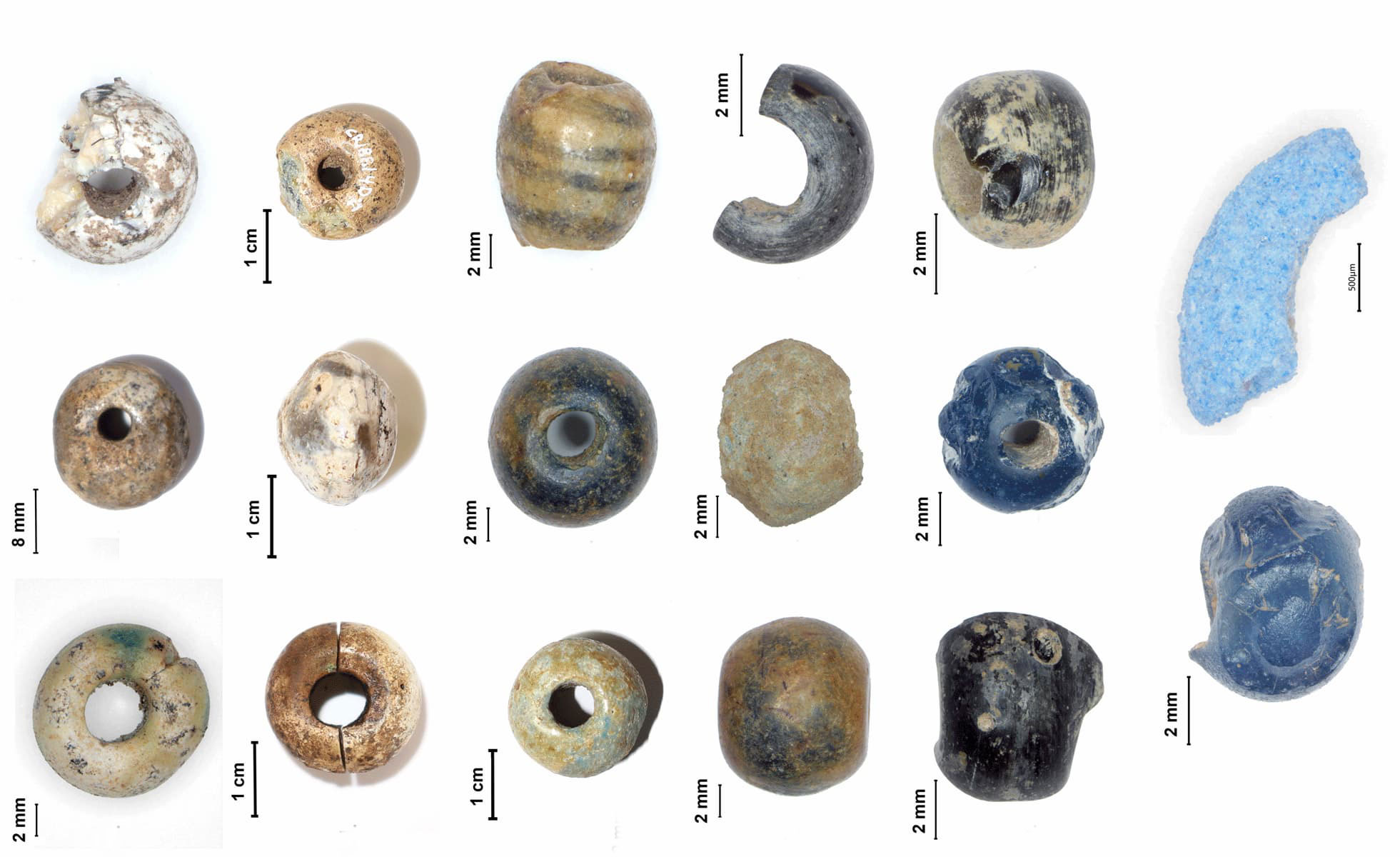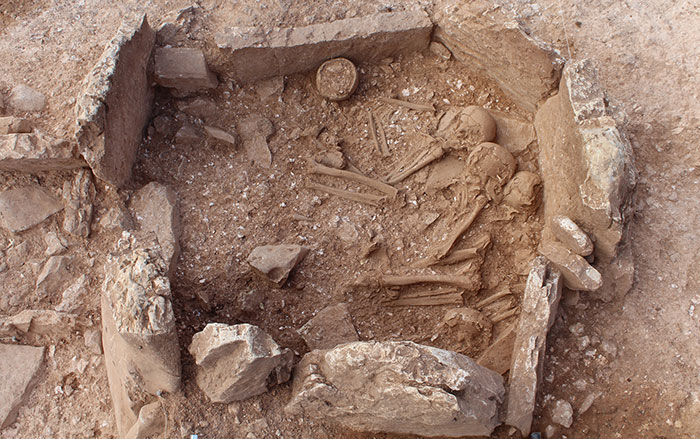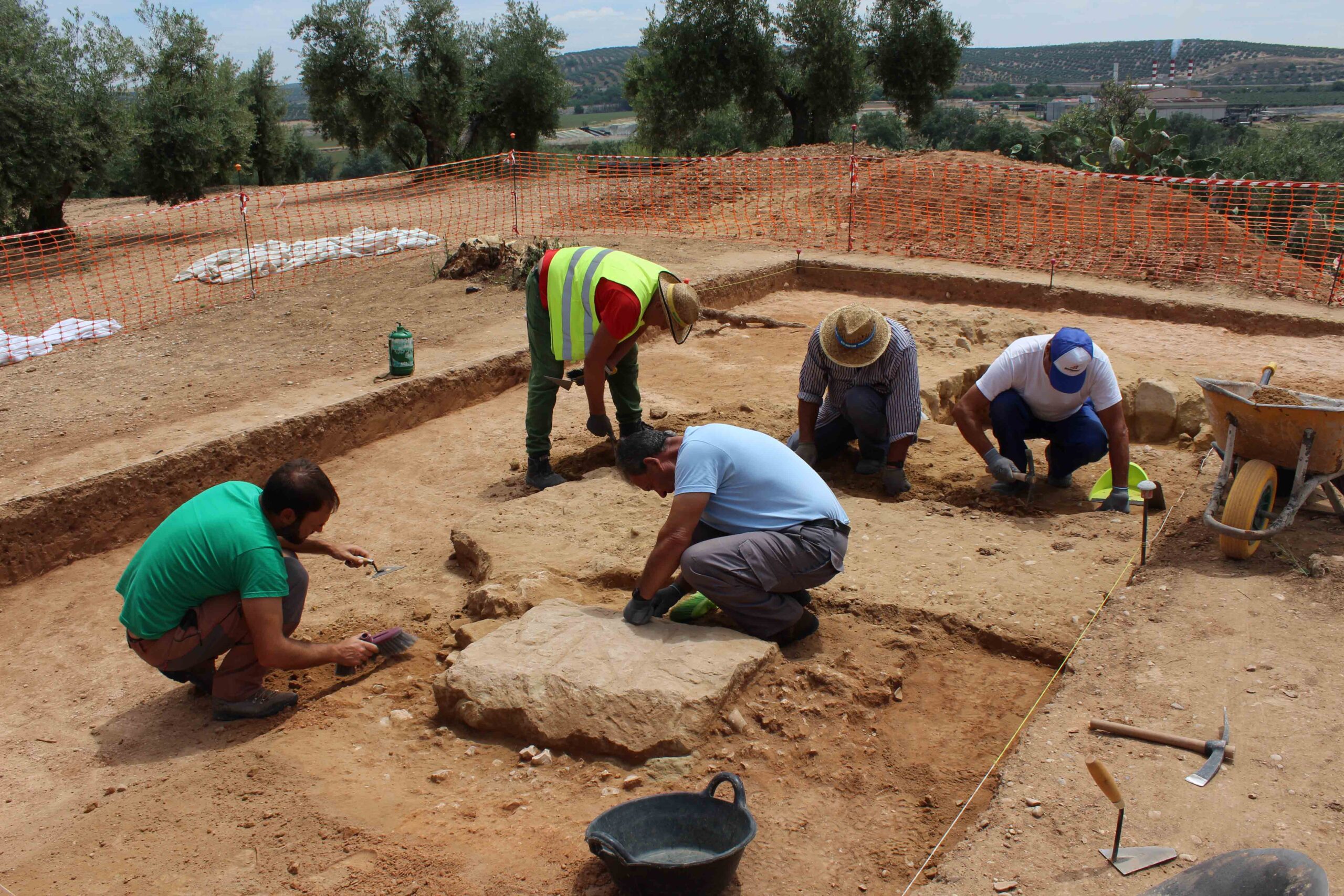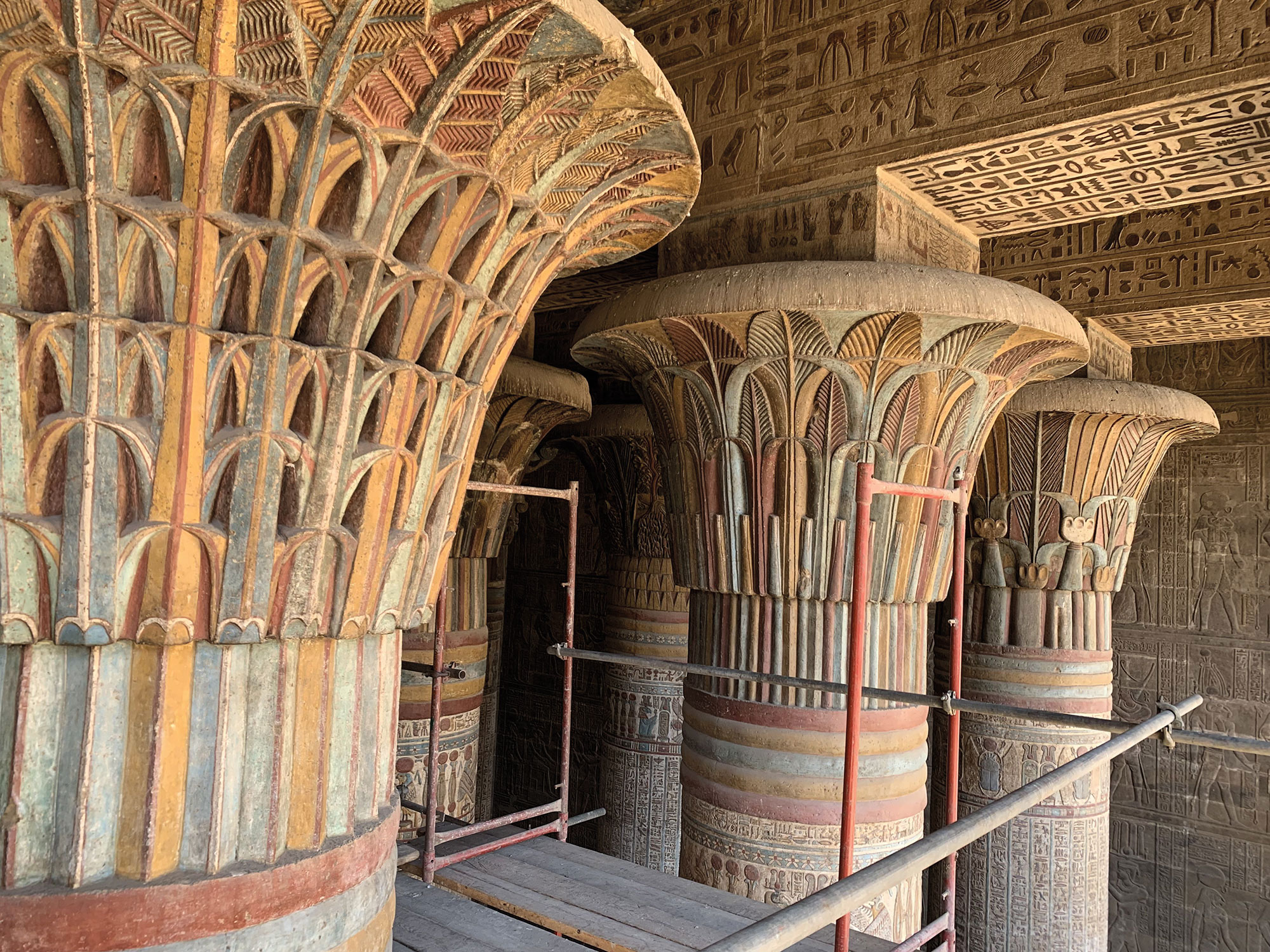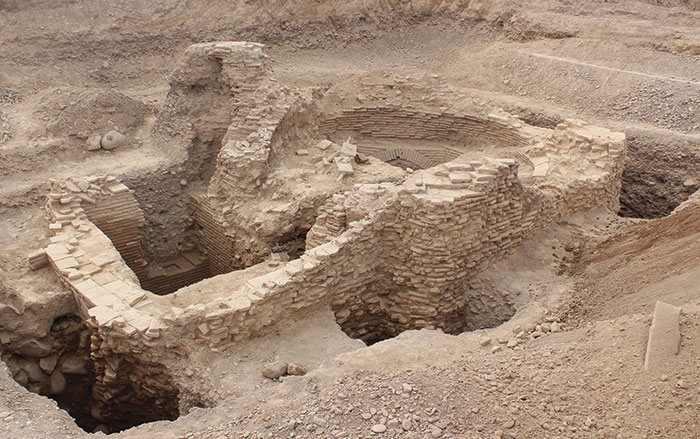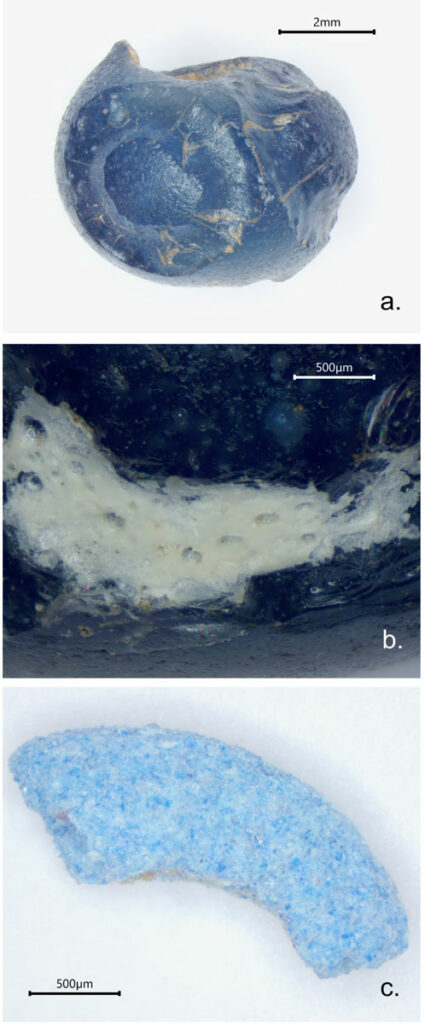
ALICANTE, SPAIN—According to a report in La Brújula Verde, the discovery of more than a dozen glass beads that were imported from Central Europe, Egypt, and the Near East at three sites in southeastern Spain has provided new evidence of far-reaching trade networks during the Late Bronze Age (ca. 1650–1100 B.C.). Beginning in the sixteenth century B.C., the glass beads found in Iberia were usually made using plant ash, a technique that had been employed in Egypt and the Near East since the second millennium B.C. Now, researchers from the University of Alicante and the University of Augsburg have discovered that in addition to the plant-ash glass beads, Final Bronze Age (ca. 1100–1000 B.C.) Iberians were also importing glass made using natron, a type of salt used by Egyptian glassmakers—and mummy makers—during this period. This type of glass is known as faience, and some of the beads from these Iberian sites are the first faience beads ever found in Spain. Researchers have also identified the oldest blue bead in western Europe that displays the bright color known as Egyptian blue. According to the study’s authors, these results expand scholars’ knowledge of glass technology in European prehistory and demonstrate the dynamism of prehistoric exchange networks. Read the original scholarly article about this research in Journal of Glass Studies. To read about glass bead exchanges in Nigeria from the eleventh to fifteenth century A.D., go to "The Glass Economy."


